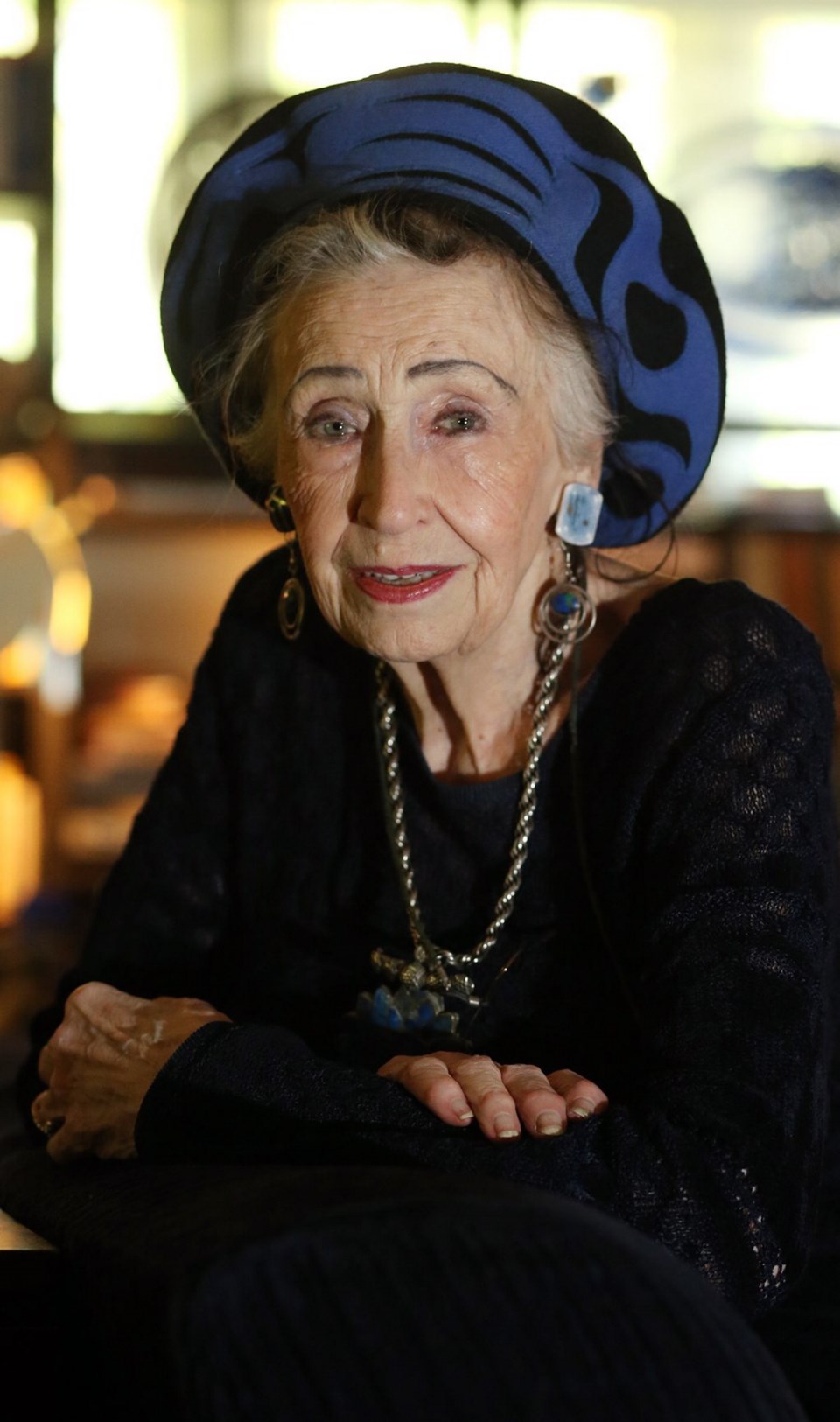An art historian hopes her new book about Pat Martin Bates helps boost the Victoria artist to the prominence she deserves.
Patricia Bovey is the author of Pat Martin Bates: Balancing on a Thread (Frontenac House). She says Bates — who has had considerable recognition outside of Canada — is somewhat overlooked in this country.
“I think her significance is far larger than a lot of people realize. I think she was a real trail-blazer,” said Bovey, a former director of the Art Gallery of Greater Victoria and the Winnipeg Art Gallery. “I’d like her to get Canadian kudos. She’s had all sorts of international awards.”
New Brunswick-born Bates, 87, is a print-maker, painter and sculptor. She’s particularly renowned for Plexiglas light-boxes and prints, some featuring images perforated with a hat-pin that once belonged to her grandmother.
In Canada, she has had major exhibitions and received honours such as the Queen’s Jubilee Medal. Yet Bovey says Martin is more widely appreciated overseas, where she has won top awards for her prints. In Japan, they call her Ambassador Extraordinaire, in Yugoslavia they refer to her as the Angel from Heaven. In England, she’s known simply Lady Print.
A 1968 work deemed a “masterpiece” by Bovey sits in the window of the artist’s Oak Bay living room. It is Bates’s Flight Window of the Alchemy Letter From the Sun to the Moon. Made of Plexiglas (a medium in which Bovey says Bates is a pioneer) the rectangular sculpture is dominated by an eye-shaped medieval symbol called a mandorla. Bates said it represents transformation, hope and the way humans perceive the world.
Rays of sun filter through the sculpture into the room, stuffed with art, books, cushions and Persian rugs.
“It is,” Bates said, “all about light.”
Asked about her perforated artworks that resemble stars when illuminated, she recalled being fascinated as a child by light streaming through lace curtains. This was at a parsonage in Saint John, where Bates stayed with relatives after her father died in his late 20s. The year was 1935 — she was just eight years old.
Bates’s father, an accountant, was a kindred spirit with an artistic temperament. It was he who converted a chicken coop into a “little studio” for Bates. It was he who asked her daily to describe in detail what she had witnessed — something she believes helped hone her artist’s eye.
“He’d say: ‘What did you see today? What did you hear today?’ ”
Another seminal incident, described in Bovey’s book, was an accident that happened when Bates was 15. She fell down a coal chute in Moncton.
She hit her head, damaged her back and spent two months in hospital (“long enough to read the entire works of Sir Walter Scott”).
Bates spent further months mostly flat on her back, lying on a bed made from a wooden door. This gave her more time to study light, noticing the way it struck a huge acacia tree outside the window. An active teen who loved the outdoors, Bates said her world became more inwardly directed.
Quizzed on what drives her as an artist, Bates was matter-of-fact. Everyone has artistic potential, she said.
“You just have to have that old-fashioned stick-to-it-iveness.”
Bovey said Bates’s natural talent is honed by a sophisticated, highly literate world view.
She was educated at art institutes in Belgium, France and the U.S., and her art reflects her deep readings into Sufism, Judaism, Christianity and Buddhism. She’s interested in geomancy and numerology (numbers feature prominently in Bates’s artworks).
Bates encountered a third tragedy that helped shape her life as an artist. In 1961, her best artworks were gathered for her first solo exhibition at Robertson Galleries in Ottawa. Before the opening, the gallery burned down, destroying everything.
Naturally, the artist was devastated to see her life’s work go up smoke. Instead of giving up, Bates started creating new works.
Because she had little money, she made prints using paper towels pilfered from a bank’s public washroom.
“You’d go crazy otherwise,” Bates said. “You’d go out of your mind.”
Bovey, who wrote and researched her book over seven years, admires the fact that Bates continues to create with the vigour of an artist half her age.
“Here she is 87,” Bovey said. “And she’s still doing it, you know.”
